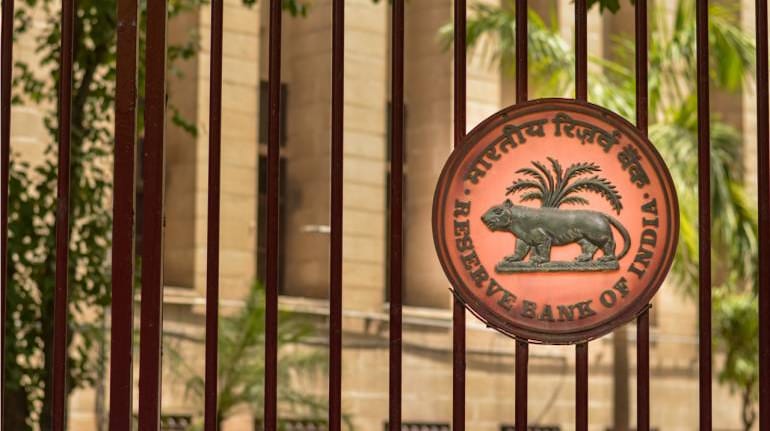



The Monetary Policy Committee (MPC) is likely to hold the repo rate at 6.50 percent and maintain a ‘Withdrawal of Accommodation’ stance in the upcoming October monetary policy, a Moneycontrol poll of at least 10 economists, bankers and fund managers has shown.
This is on account of the moderation in Consumer Price Index (CPI) Inflation in August and stable economic activity, a majority of the economists who participated in the poll, said.
“The RBI will have little reason to change the current policy settings, and we expect the MPC to keep the repo rate unchanged at 6.5 percent, flagging waning core inflation, steady economic activity, and some risks of more supply-related price shocks, providing a little cue for a change in policy thinking,” said Rahul Bajoria, MD & Head of EM Asia (ex-China) Economics, Barclays.
“The RBI monetary policy committee (MPC) is expected to extend its hawkish pause and keep the ‘withdrawal of accommodation’ stance, at the upcoming policy review on October 6,” said Radhika Rao, Executive Director and Senior Economist, DBS Group Research.
The six-member Monetary Policy Committee (MPC) of the RBI will meet from October 4 to 6, to decide on the interest rates.
Since the April monetary policy, the RBI has kept the repo rate unchanged at 6.50 percent, after raising rates by 250 basis points (bps) since May 2022. This was after inflation showed signs of moderating.
One basis point is one-hundredth of a percentage point.
Also read: RBI policy, auto sales, global data points to map the road ahead for markets: Experts
Inflation projections
Economists believe that the surge in crude oil prices in September is likely to put pressure on inflation, but the central bank will keep the inflation forecast unchanged at 5.4 percent, while flagging the risk of inflation.
“The headline inflation is expected to cool down in September as compared to August, but it still remains above the RBI's comfort zone. The recent spike in crude oil prices and global bond yields shall keep MPC vigilant on inflation-growth dynamics,” said Parijat Agrawal, Head-fixed income at Union Asset Management Company.
Since the last monetary policy, CPI inflation in India reached a 15-month high of 7.44 percent and breached the RBI’s 6 percent upper limit for the first time since October 2022 because of both seasonal prices of vegetables, particularly tomatoes and structural inflation.
In August this year, retail inflation moderated to 6.8 percent due to a decrease in vegetable prices. Further, according to an IDFC First Bank report, a large part of the moderation in core CPI has been led by goods inflation with core WPI inflation turning negative. “Moreover, the reduction in input cost pressures on companies in H1FY24 also enabled softer core CPI services inflation.”
According to an ICRA ratings report, the steep rise in global crude oil prices will not significantly impact retail inflation, as there will be pressure on oil marketing companies (OMCs) to refrain from increasing retail prices for petrol and diesel.
In the August monetary policy, the central bank raised the inflation forecast for the current financial year to 5.4 percent from 5.1 percent after inflation breached the upper tolerance band.
The RBI expects inflation in the second quarter of FY24 at 6.2 percent, third quarter at 5.7 percent and to touch 5.2 percent in the fourth quarter. The consumer price index (CPI) inflation for the first quarter of FY25 is projected at 5.2 percent.
However, according to Umesh Revankar, Executive Vice Chairman, Shriram Finance, since the latest monetary policy announcement, the monsoons have been active, narrowing the deficit gap of the long-term average of overall rains and also the prices of essential necessary food commodities have been under control.
Also read: India’s growth a global standout with China slowing and US recession still likely
Liquidity
On the liquidity announcement, economists said the central bank is likely to focus on maintaining adequate liquidity through its Liquidity Adjustment Facility (LAF) operations, and may not announce any tightening measures.
This is because the liquidity in the banking system has undergone a significant tightening since the last policy meeting.
“We don’t expect further liquidity tightening measures from RBI in the October policy,” said Gaura Sengupta, Economist at, IDFC First Bank.
Systemic liquidity, which had been surplus at Rs 2.1 lakh crore during the August MPC meeting, transitioned into a deficit of Rs 1.5 lakh crore by September 27. This shift has increased money market rates, with the overnight call money rate rising over the repo rate and marginal standing facility rate.
The liquidity in the banking system started falling into deficit after advance tax payments and the goods and service tax payment. Liquidity remained in deficit since September 15 but moderated a bit at the start of October.
Currently, it is estimated to be in deficit of around Rs 30,203.54 crore as of October 2.
Discover the latest Business News, Sensex, and Nifty updates. Obtain Personal Finance insights, tax queries, and expert opinions on Moneycontrol or download the Moneycontrol App to stay updated!
Find the best of Al News in one place, specially curated for you every weekend.
Stay on top of the latest tech trends and biggest startup news.